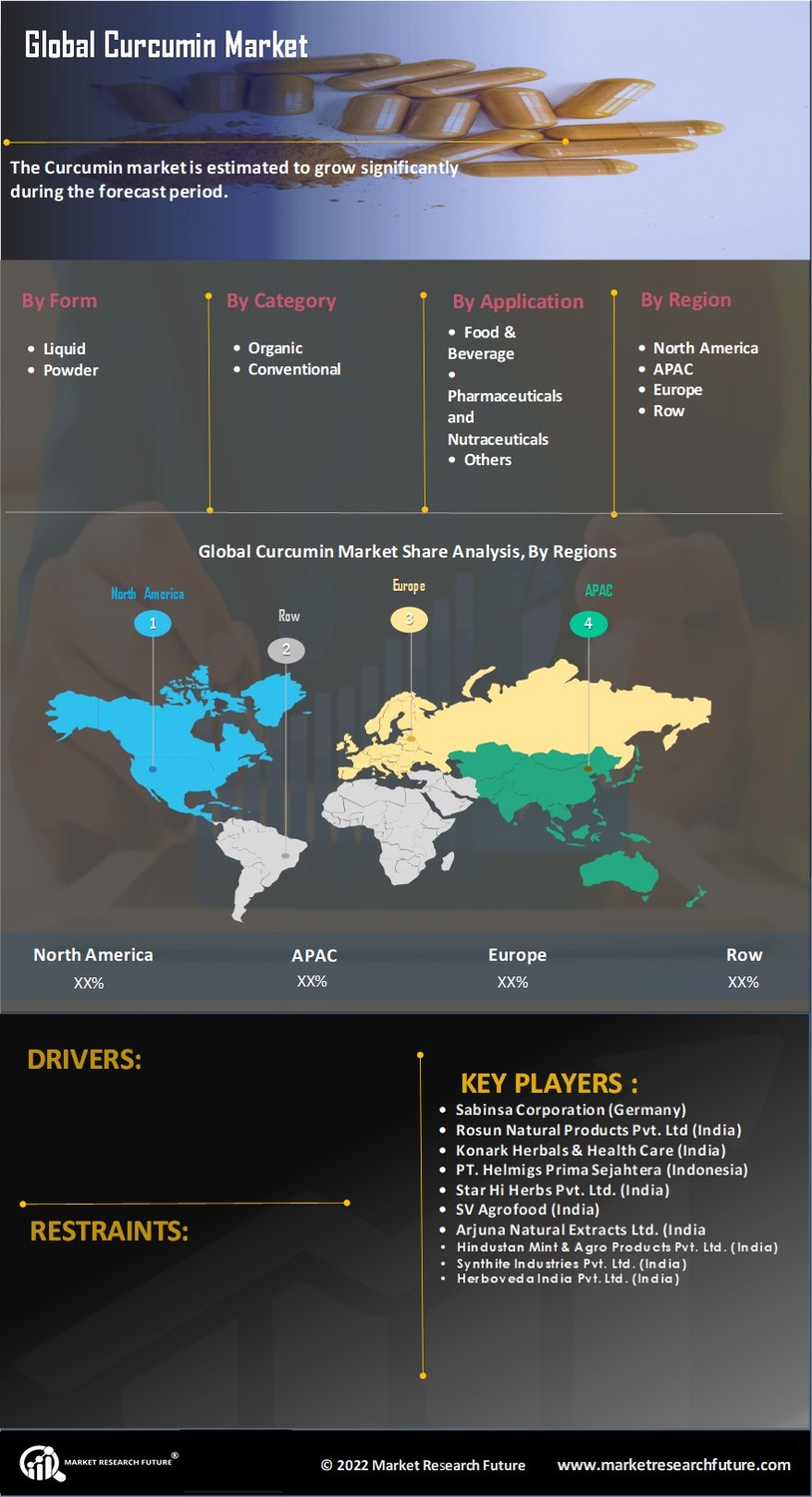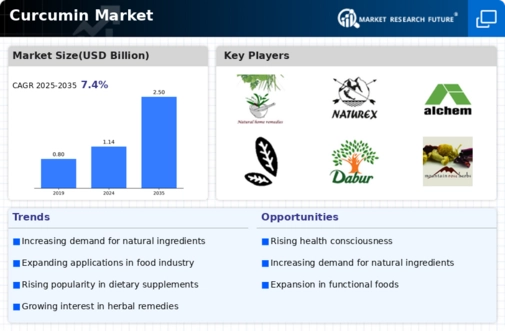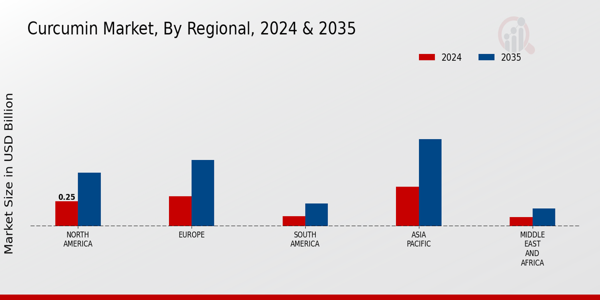Rising Health Awareness
The increasing global awareness regarding health and wellness is a pivotal driver for the Global Curcumin Market Industry. Consumers are becoming more conscious of the benefits of natural ingredients, leading to a surge in demand for curcumin, known for its anti-inflammatory and antioxidant properties. This trend is particularly evident in dietary supplements and functional foods, where curcumin is often highlighted as a key ingredient. As a result, the market is projected to reach 1.14 USD Billion in 2024, reflecting a growing preference for natural alternatives over synthetic options.
Market Growth Projections
The Global Curcumin Market Industry is projected to experience substantial growth over the coming years. With a market value expected to reach 1.14 USD Billion in 2024 and potentially 2.5 USD Billion by 2035, the industry is on a promising trajectory. The anticipated compound annual growth rate of 7.4% from 2025 to 2035 indicates a robust demand for curcumin across various sectors, including health supplements, food and beverages, and cosmetics. This growth reflects the increasing consumer preference for natural ingredients and the expanding applications of curcumin in diverse markets.
Growing Interest in Natural Remedies
The Global Curcumin Market Industry is benefiting from a rising interest in natural remedies and alternative medicine. As consumers seek holistic approaches to health, curcumin's reputation as a natural anti-inflammatory agent has gained traction. This shift towards natural products is reflected in the increasing number of herbal formulations and supplements containing curcumin. The market's growth trajectory is likely to be sustained, with a compound annual growth rate of 7.4% anticipated from 2025 to 2035. This trend indicates a robust demand for curcumin as a staple in natural health products.
Expansion in Food and Beverage Sector
The Global Curcumin Market Industry is experiencing notable growth due to its incorporation into the food and beverage sector. Curcumin is increasingly used as a natural colorant and flavor enhancer, appealing to health-conscious consumers. The demand for clean-label products has prompted manufacturers to explore curcumin as a viable ingredient, thereby expanding its application. This trend is expected to contribute significantly to the market's growth, with projections indicating a rise to 2.5 USD Billion by 2035. Such developments underscore the potential of curcumin in enhancing product offerings within the food industry.
Regulatory Support for Natural Ingredients
The Global Curcumin Market Industry is positively influenced by regulatory support for natural ingredients in food and dietary supplements. Governments worldwide are increasingly recognizing the benefits of curcumin, leading to favorable regulations that promote its use. This supportive regulatory environment encourages manufacturers to incorporate curcumin into their products, thereby expanding its market presence. As consumers continue to demand transparency and safety in food products, the regulatory backing for curcumin is likely to enhance its appeal, contributing to the overall growth of the market.
Technological Advancements in Extraction Methods
Innovations in extraction and formulation technologies are driving the Global Curcumin Market Industry forward. Enhanced extraction methods improve the bioavailability of curcumin, making it more effective in various applications. These advancements not only increase the efficiency of curcumin extraction but also reduce production costs, making it more accessible to manufacturers. As a result, the market is poised for growth, with the potential for new product developments that leverage these technologies. This evolution in extraction techniques could further solidify curcumin's position in the health and wellness sector.


















